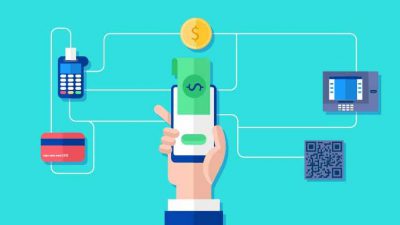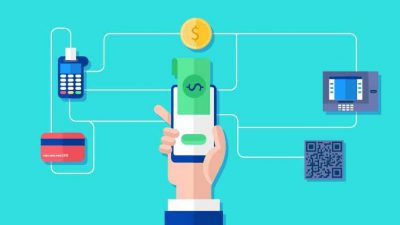Technology Pays. Let Us Count the Ways…
The world may be contracting but the way to pay for it is greatly expanding
February 20, 2020

The travel industry is currently experiencing a technological renaissance. Artificial intelligence (AI), the internet of things (IoT), virtual reality (VR), augmented reality (AR), facial recognition software and electronic payments are reshaping the way the world travels. It may be the most innovative time in the history of travel.
In decades past, cash, credit and debit cards have been the default means for people around the world to make purchases. However, in recent years, alternative payment methods have been gaining in popularity. To stay ahead of the technology curve and provide customers with safe, easy and fast payment options, companies have turned to a variety of online payment types.
FlightHub and JustFly describer below how electronic payments benefit travelers and business alike.
Defining Electronic Payments:
Simply put, electronic payments are all payments that don’t involve physical currency. In technical terms, credit and debit cards are also considered electronic payments. Although both card types remain in use, there’s been a notable increase in payments that require no tangible card at all.
See a short list of other electronic payment types below:
• Automated Clearing house (ACH)
• Wire Transfers
• Item Processing (IP)
• Remote Deposit Capture (RDC)
• FedLine Access Solutions
• Automated Teller Machines
• Card Services (ATM, credit, debit, prepaid)
• Mobile Payments
Statistics on Electronic Payments:
Technology adoption is typically segmented into five categories: innovators, early adopters, early majority, late majority and laggards. Some businesses and countries are keen on innovating their own payment technology. Many others will be early adopters. Statistical analysis of electronic payment trends provides a clearer look at consumer behavior and the businesses leading the charge.
• In 2016, 62 percent of online transactions in China were paid via e-wallet. (Worldpay)
• With 60.18 percent of market share, PayPal is the leading online payment gateway. (Finances Online)
• By 2022, 28 percent of US consumers will pay for goods by e-wallet. (Finances Online)
• 78 percent of global consumers buy goods on Amazon. (Finances Online)
• 69 percent of Generation Z use mobile banking apps daily or weekly. (Accenture)
• 52.5 percent of American smartphone users will have made one or more P2P transactions (eMarketer)
In 2017, Worldpay, a leading payment technology report made a series of projections. The trends were evident. By 2021, credit card use would decline as e-payments increase. While bank transfer use would remain nearly the same, debit card usage would decrease. Reports from several other reputable sources indicate similar trends.
Safety:
Consumers and merchants have collectively voiced concerns about the safety of electronic payments, specifically privacy and the potential for identity theft. However, businesses have taken precautions to prevent their customers’ financial information from being compromised. New ways of keeping personal information secure are continuously being developed.
Technologies currently being used to protect payment details:
• Facial recognition software
• Fingerprint technology
• Two-factor authentication
• Virus protection applications
• Firewalls
• Blockchain technology
• Secured servers
In addition, companies do their part by using sophisticated data encryption tools to further secure sensitive data. With these measures in place, e-payments may actually be safer than their more traditional predecessors.
Electronic Payments and Travel:
The notion of “frictionless payments” has been discussed throughout the travel industry for some time. What exactly are frictionless payments? They’re online and offline checkout procedures where very little gets in the way of making a purchase.
Previously, travel businesses had not been able to deliver at a level that was satisfactory. Travelers now have a glossary of electronic payment options. See the most popular options below:
• PayPal
• MobilePay
• Apple Pay
• Samsung Pay
• Google Wallet
There are currently more than 300 ways for travelers worldwide to make travel-related payments. The most commonly stated reasons for switching to e-payments are convenience and lower risk of having information stolen. Research firms have provided statistics to further confirm what experts in the payment technology industry have projected for years—electronic payments are not only the future of financial transactions, they’ll be a major factor in how we live, spend and travel as well.




